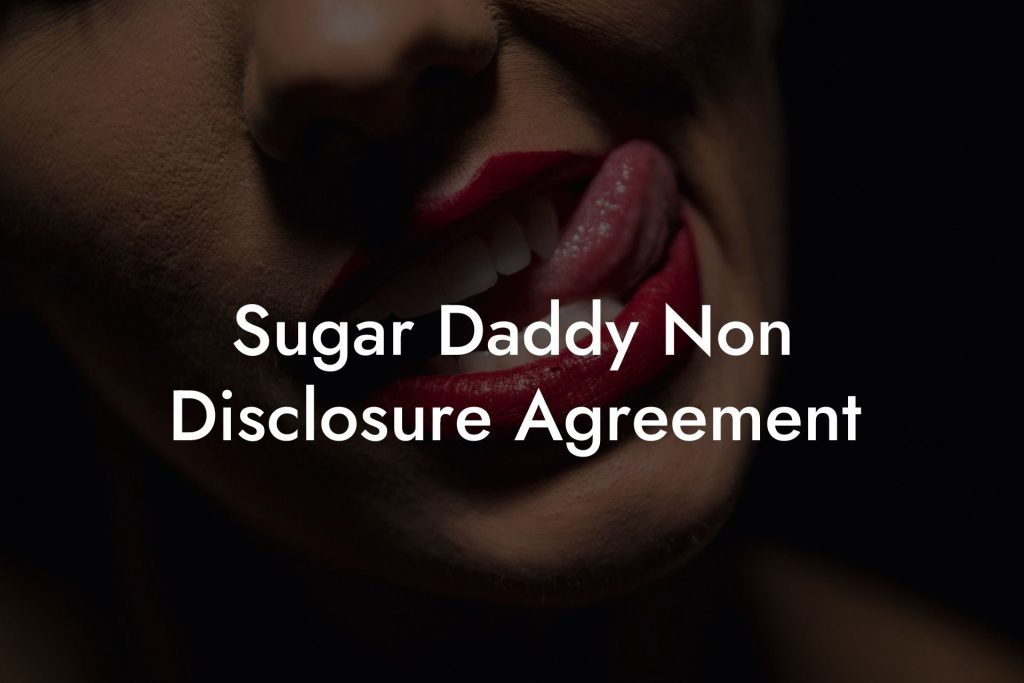In the diverse and intricate world of BDSM, a submissive contract emerges as a pivotal instrument, sculpting the dynamics of power exchange relationships with precision and care. This comprehensive guide aims to unravel the layers of the BDSM submissive contract, offering insights into its purpose, structure, and the profound impact it holds within these unique connections. Prepare to dive into an article that balances professionalism with a high-energy narrative, designed to entertain as much as it informs.
In any BDSM relationship, consent is the cornerstone of trust and respect. It’s more than just saying “yes” or “no”—it’s about openly communicating your desires, limits, and expectations. But trust doesn’t end with a conversation—it’s built through ongoing, clear agreements. That’s where our Dominant & Submissive BDSM Contract Pack comes in. Find out more →
The Essence of a BDSM Submissive Contract
At the heart of any BDSM relationship lies communication, trust, and consent. A submissive contract serves as a testament to these pillars, offering a formalized framework through which the desires, boundaries, and responsibilities of both the dominant and submissive are articulated and agreed upon.
Purpose and Significance
The BDSM submissive contract is much more than a document; it is a symbolic and practical tool that fosters understanding and respect. By clearly outlining the expectations and limits within the relationship, it helps prevent misunderstandings and ensures that every interaction is founded on mutual consent.
The Anatomy of a Submissive Contract
While each contract is as unique as the individuals involved, certain key components are almost universally included:
- Parties Involved: Identifying the dominant and submissive.
- Term of Agreement: Duration of the contract, whether fixed or indefinite.
- Duties and Services: Responsibilities and roles of each party.
- Limits and Safewords: Hard and soft limits, and the safewords to be used.
- Privacy and Confidentiality: Agreements regarding the sharing of information.
- Health and Safety: Commitments to physical and emotional well-being.
- Dispute Resolution: Methods for resolving conflicts.
- Amendments and Termination: How and when the contract can be changed or ended.
Crafting the Contract: A Collaborative Journey
Creating a BDSM submissive contract is a journey that requires honesty, openness, and a deep understanding of oneself and one's partner. It's a process that not only lays the groundwork for the relationship but also deepens the connection between the dominant and submissive.
Looking for the best BDSM & Kink OnlyFans content creators? Here is a list of of our favourites that you will love:
-
- Best BDSM & Fetish OnlyFans - Molly✨ >> Link
- Best BBW & Huge Ass OnlyFans - Naughty Hanna Zimmer 💜🎀 >> Link
- Best Sexy Gaming Nerd OnlyFans - 🎮 Gracy EstuSWEET 🎮 >> Link
- Best Fetish & Kink Messaging OnlyFans - 💫Lola La Fleur 💫 >> Link
- Best Girl Next Door OnlyFans - ☀️Lily ⛅ >> Link
- Best Tiny European OnlyFans - 💝 Ami Allison 💝 >> Link
- Best Cosplay OnlyFans - 🐱 Little Kitty Kate 👉👌 >> Link
- Best Little OnlyFans - 🧸 Katya 🙇♀️ Sun >> Link
- Best Sub OnlyFans - 🍌Hanna Banana🍌 >> Link
- Best Teen & Huge Tits OnlyFans - ❣️Anny❣️19 y.o. BUSTY student girl >> Link
- Best Tiny Tits OnlyFans - ⍣⭐️ Sofia Parker ⭐️⍣ >> Link
- Best Sub & Huge Boobs OnlyFans - Nika Huge Boobs >> Link
- Best Kink OnlyFans - Sofia💖 >> Link
- Best Fetish & Girl Next Door OnlyFans - Hillary is Wet 💦 >> Link
- Best Dirty Latina OnlyFans - Paula Flores 😈 >> Link
Not quite what you are looking for? View the full list →
Dialogue and Discovery
The first step is a thorough discussion about what both parties want and expect from the relationship. This is an opportunity to explore desires, fears, and boundaries in a safe and supportive environment.
Writing Together
Drafting the contract should be a collaborative effort. This ensures that the agreement accurately reflects the wishes and limits of both parties and that both have a stake in the dynamics of the relationship.
Flexibility and Evolution
As relationships grow and evolve, so too should the submissive contract. Regular reviews allow for adjustments and renegotiations, ensuring that the contract remains relevant and supportive of the dynamic.
The Impact of a Submissive Contract on the BDSM Dynamic
Implementing a submissive contract can significantly enhance the BDSM relationship. It provides a clear framework within which the power exchange can occur, ensuring safety, consent, and mutual satisfaction.
Enhanced Communication and Trust
By necessitating thorough discussion and mutual agreement, the contract fosters an environment of unparalleled communication and trust. This, in turn, deepens the connection between the dominant and submissive, making for a more fulfilling and dynamic relationship.
Safety and Consent
A well-crafted contract is a cornerstone of safety and consent in BDSM play. By explicitly stating limits and safewords, it ensures that all activities are consensual and that the well-being of both parties is always paramount.
Personal Growth and Exploration
The process of negotiating and living within the bounds of a submissive contract can be incredibly growth-inducing. It encourages self-exploration, communication skills, and a deeper understanding of one's desires and limits.
Ethical Considerations in Submissive Contracts
Ethics play a crucial role in the drafting and implementation of a BDSM submissive contract. Respect, consent, and mutual satisfaction are the ethical pillars that should guide every aspect of the contract.
Informed Consent
Consent is not just a one-time agreement but a continuous, ongoing process. The contract should ensure that all activities are based on informed, enthusiastic consent from all parties involved.
Respect and Dignity
Even within the power dynamics of a BDSM relationship, respect and dignity must be maintained. The contract should reflect a deep respect for each participant's limits, desires, and personhood.
Privacy and Discretion
The contract must include clauses that protect the privacy and confidentiality of the parties involved, safeguarding their personal and professional lives.
Frequently Asked Questions
What is a BDSM contract?
A BDSM contract is a written agreement between individuals who engage in BDSM activities. It outlines the roles, expectations, boundaries, and limits of the play involved. While not legally binding, it serves as a tangible commitment to mutual consent, trust, and understanding of each party's responsibilities and desires.
Is a BDSM contract legally enforceable?
No, BDSM contracts are not legally enforceable. They are symbolic agreements that help create clearer communication and expectations among participants but do not hold legal weight in a court of law.
Why might someone want to establish a BDSM contract?
Individuals may wish to establish a BDSM contract to ensure that all parties have a mutual understanding of consent, hard limits, safe words, roles, and expectations. It creates a framework that enhances trust and safety for all involved.
What should be included in a BDSM contract?
A BDSM contract should include the names of the parties involved, the duration of the arrangement, limits, safe words, roles, expected behaviors, rules, and any other consensual activities agreed upon. It should also outline how to safely exit the contractual agreement.
Can a BDSM contract be changed?
Yes, a BDSM contract can and should be modified if the needs, desires, or limits of either party change. Ongoing communication and consent are key, and contracts can be renegotiated to accommodate personal growth or new boundaries.
How does trust factor into a BDSM relationship?
Trust is paramount in a BDSM relationship. It allows individuals to feel safe exploring their desires and limits. Trust is built through clear communication, respect, and consistent adherence to the agreed-upon contract and boundaries.
What are power dynamics in a BDSM context?
Power dynamics in BDSM refer to the consensually agreed-upon distribution of control between participants. This often involves roles such as dominant (dom/domme) and submissive (sub), but can include various other dynamics and titles.
Is consent ongoing in BDSM activities?
Yes, consent must be ongoing in BDSM activities. Continuous communication is vital, and any participant should feel empowered to withdraw consent at any point if they feel uncomfortable or their boundaries are being pushed or crossed.
What is a safe word and why is it important?
A safe word is a pre-negotiated and clear word or signal used by participants to halt BDSM activities immediately. It is crucial for maintaining the safety and trust of those involved, ensuring that the scene stops whenever consent is withdrawn or boundaries are reached.
How do I talk to my partner about creating a BDSM contract?
Approach your partner with openness and honesty. Share your interests and motivations for wanting a BDSM contract, and invite them to express their desires and concerns. Emphasize the importance of mutual consent and create a safe space for discussion.
Can a beginner participate in BDSM activities?
Yes, a beginner can participate in BDSM activities, but it is important to start slowly, communicate clearly, and educate oneself on safety practices. It is also wise to negotiate boundaries and expectations upfront, possibly starting with a simple and clear contract.
How can individuals keep BDSM activities safe?
BDSM activities can be kept safe through the principles of SSC (Safe, Sane, and Consensual) or RACK (Risk-Aware Consensual Kink), which emphasize understanding the risks involved, clear conversations about consent and boundaries, safe words or signals, and keeping communication open.
What if a safe word is ignored during a BDSM scene?
If a safe word is ignored, it breaches the fundamental trust and consent upon which BDSM relationships are based. This is considered abuse, and individuals should immediately cease all activities. Support and help from trustworthy individuals or professionals should be sought after.
Are there any legal considerations to be aware of when engaging in BDSM activities?
While BDSM activities are legal among consenting adults, it is pivotal to communicate and record consent since some acts may otherwise be interpreted as assault. Understanding local laws concerning assault and consent is necessary to navigate BDSM legally and safely.
How can someone exit a BDSM contract?
Exiting a BDSM contract should be managed respectfully and according to the terms set out in the agreement. This usually involves having a conversation and mutually agreeing to end the arrangement. Exit clauses should ideally be built into the contract to provide clear procedures on how to handle this.
What are ‘limits’ in the context of a BDSM contract?
Limits are the boundaries set by the participants regarding what they are not willing to engage in. These can be 'hard' limits that are strictly off-limits or 'soft' limits that may be pushed under certain circumstances with explicit consent.
How can someone ensure they fully understand their partner’s limits?
To ensure a full understanding of a partner’s limits, maintain an open dialogue where each individual feels comfortable sharing their concerns and boundaries. Regular check-ins and updates on feelings towards certain acts should be encouraged.
Is aftercare an important part of BDSM?
Yes, aftercare is an essential part of BDSM as it addresses the physical and emotional well-being of participants after intense sessions. It involves caring actions like cuddling, debriefing the experience, and ensuring comfort for all parties involved.
How can BDSM help in personal growth?
BDSM can potentially lead to personal growth by allowing individuals to explore their sexuality, set boundaries, communicate needs, and trust others. The level of honesty and vulnerability involved can lead to improved self-awareness and confidence.
What resources are available for people interested in BDSM?
There are many resources available including books, workshops, community groups, online forums, and educational videos focused on safety, technique, and community norms. It's advisable to seek reputable sources that promote safe and consensual practices.
Should people use their real name in a BDSM contract?
Whether to use real names is a personal decision that depends on the level of trust and privacy sought. Some people opt for pseudonyms or scene names to maintain anonymity, while others use legal names for a sense of formality and commitment.













